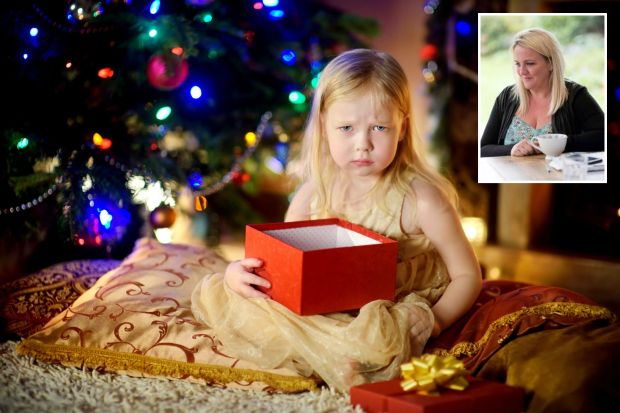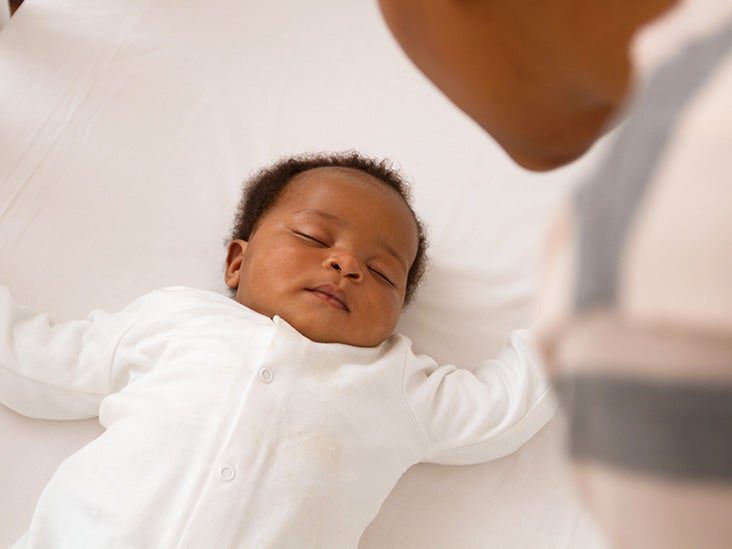How Long Should Baby Sleep in Your Room UK: A Complete Guide
In the UK, the current guideline is for babies to sleep in the same room as their parents for the first six months. This practice is recommended to reduce the risk of Sudden Infant Death Syndrome (SIDS).
Room sharing with parents allows for easier monitoring and breastfeeding, which are both protective factors against SIDS. However, after six months, it is generally advised to move babies into their own room for independent sleep. This transition can vary depending on individual circumstances and parental preferences.

Credit: www.lightingcompany.co.uk
Benefits Of Keeping Baby In Your Room
Keep your baby in your room for the first six months as recommended by the NHS. Room sharing reduces the risk of SIDS, makes breastfeeding easier, and allows you to monitor your baby’s sleep and well-being.
When it comes to your baby’s sleep, one of the best decisions you can make as a parent is to keep your baby in your room. There are several benefits to having your little one sleep close to you, from reducing the risk of SIDS to promoting breastfeeding and ensuring easier night-time care.
Reduces Sids Risk
Keeping your baby in the same room as you can significantly reduce the risk of Sudden Infant Death Syndrome (SIDS). Studies have shown that room sharing can lower the chances of SIDS by up to 50%. This is because having your baby nearby allows you to monitor their breathing and respond quickly if any issues arise. The background sounds and activity in the room also prevent very deep sleep, which helps keep your baby safe. To ensure the safety of your baby, the American Academy of Pediatrics recommends room sharing for at least the first six months.
Promotes Breastfeeding
Room sharing also makes breastfeeding easier, which is another protective factor against SIDS. When your baby is sleeping in the same room as you, night-time feedings become more convenient. You’ll be able to pick up on hunger cues more quickly and easily, and your baby won’t have to fully wake up or become fully alert in order to be fed. This promotes a better breastfeeding relationship between you and your baby, leading to better overall health and development.
Easier Night-time Care
Having your baby in your room makes night-time care much easier. Whether it’s changing a diaper, soothing them back to sleep, or simply providing reassurance with your presence, being in close proximity to your baby allows for quick and efficient caregiving. You won’t have to trek across the house every time your baby needs attention, saving you valuable time and energy during those sleep-deprived nights. Plus, being close by can help calm your baby and ease any anxiety they may be feeling, promoting better sleep for both of you.
In conclusion, keeping your baby in your room offers numerous benefits. It reduces the risk of SIDS, promotes breastfeeding, and makes night-time care easier. By prioritizing your baby’s sleep and well-being, you can create a secure and nurturing environment that sets the foundation for healthy sleep habits in the future.
Recommended Age For Room Sharing
For optimal safety, experts recommend that babies sleep in the same room as their parents for the first six months. This practice reduces the risk of Sudden Infant Death Syndrome (SIDS) and makes breastfeeding easier.
Up To 6 Months
When it comes to room sharing with your baby in the UK, experts recommend keeping your baby in the same room as you for at least the first six months.
The NHS advises that sharing a room with your baby for this duration has several benefits. It reduces the risk of Sudden Infant Death Syndrome (SIDS) and allows for improved monitoring and easier access to your baby during nighttime feeds and care.
Nhs Guidelines
The NHS advises parents to keep their baby in a separate cot or Moses basket in the same room as them for the first six months. This recommendation is based on substantial research evidence that supports the safety and benefits of room sharing.
American Academy Of Pediatrics Recommendations
The American Academy of Pediatrics also supports room sharing for the first six months. According to their guidelines, room sharing, where the baby sleeps in a crib or bassinet near the parents’ bed, can reduce the risk of SIDS by about 50%
When baby shares a room with their parents, the close proximity helps to regulate their sleep patterns and promote a sense of security. The background sounds and movements of the parents also prevent the baby from entering deep sleep states, which may contribute to reducing the risk of SIDS.
Moreover, room sharing is particularly beneficial for breastfeeding mothers. The convenience of having the baby nearby makes nighttime feeding easier and promotes bonding between the mother and child.
In conclusion, experts and medical associations recommend keeping your baby in the same room as you for the first six months. This arrangement provides added safety, monitoring, and convenience for both parents and babies. It is crucial to follow these guidelines to ensure the well-being and healthy development of your child.
Creating A Safe Sleeping Environment In Your Room
Creating a safe sleeping environment for your baby is crucial. In the UK, it is recommended to have your baby sleep in your room for the first six months to reduce the risk of Sudden Infant Death Syndrome (SIDS).
Creating a Safe Sleeping Environment in Your Room When it comes to your little one’s sleep, creating a safe environment is of utmost importance. As parents, we want to ensure that our baby sleeps soundly, while also minimizing any potential risks. In this section, we will discuss some essential steps to create a safe sleeping environment in your room.Remove Hazards
One of the first things you should do is remove any potential hazards from your baby’s sleeping area. Clear the room of clutter, such as loose cords, small objects, or any items that could pose a choking hazard. Make sure that electrical outlets are covered, and secure any furniture that may tip over.Choose A Safe Crib Or Bassinet
When it comes to selecting a crib or bassinet, safety should be your top priority. Look for a crib that meets current safety standards, such as having slats that are the correct distance apart and a firm mattress that fits snugly. Check for any recalls on the crib or bassinet you intend to use and avoid using any hand-me-downs that may not meet current safety standards.Maintain Proper Room Temperature
The temperature in your baby’s sleeping environment plays a significant role in their comfort and safety. It’s crucial to maintain a comfortable room temperature, ideally between 68 to 72 degrees Fahrenheit (20 to 22 degrees Celsius). Use a room thermometer to monitor the temperature and ensure it remains within this range. Additionally, avoid placing your baby’s crib or bassinet near windows or drafts that can cause fluctuations in temperature. It’s also essential to dress your baby appropriately for sleep, considering the room temperature. Opt for clothing layers, adjusting as needed to maintain a comfortable body temperature. Creating a safe sleeping environment for your baby in your room is vital for their well-being and your peace of mind. By removing hazards, choosing a safe crib or bassinet, and maintaining the proper room temperature, you can ensure that your little one sleeps safely and soundly.Establishing A Bedtime Routine
Establishing a bedtime routine is essential for ensuring that your baby gets adequate sleep. In the UK, it is recommended to have your baby sleep in your room for the first six months to help reduce the risk of Sudden Infant Death Syndrome (SIDS).
Consistency Is Key
When it comes to establishing a bedtime routine for your baby, consistency is key. Creating a predictable pattern of activities leading up to bedtime helps signal to your little one that it’s time to wind down and prepare for sleep.
To establish consistency, try to set a specific bedtime that you consistently follow. This helps regulate your baby’s internal clock and promotes better and more restful sleep. It’s important to stick to this schedule as much as possible, even on weekends or during vacations.
Incorporate Soothing Activities
Incorporating soothing activities in your baby’s bedtime routine can help create a calm and relaxed environment that promotes sleep. Consider including activities such as a warm bath, gentle massage, or reading a favorite bedtime story.
Playing soft and soothing music or using a white noise machine can also help create a peaceful atmosphere. By associating these activities with bedtime, your baby will begin to understand that these cues indicate that it’s time to sleep.
Gradually Transition To Independent Sleep
While it’s important to have your baby sleep in your room for the first few months to reduce the risk of Sudden Infant Death Syndrome (SIDS), it’s also necessary to gradually transition them to independent sleep in their own room.
Around the age of six months, the NHS advises that babies should sleep in the same room as parents. However, as they grow older, it becomes important to establish their own sleeping space to encourage independent sleep. This helps them develop self-soothing skills and fosters a sense of security.
To make this transition smoother, consider gradually moving their crib or cot further away from your bed over a few weeks. This ensures that they gradually get used to sleeping in their own space while still feeling close to you.
Transitioning Baby To Their Own Room
When should you transition your baby to their own room in the UK? The NHS recommends that babies sleep in the same room as their parents for the first six months to reduce the risk of Sudden Infant Death Syndrome (SIDS).
Signs That Your Baby Is Ready
Transitioning your baby to their own room can be a big step for both you and your little one. However, there are signs that will indicate that your baby is ready for this important milestone. Keep an eye out for these signals:
- Improved sleep patterns: If your baby is sleeping longer stretches at night and is less reliant on nighttime feedings, it may be a good time to consider transitioning them to their own room.
- Increase in independence: If your baby is starting to show signs of independence during the day, such as crawling or exploring their surroundings, it may be an indication that they are ready for their own space at night.
- Comfort in their own crib: If your baby is comfortable and content when placed in their crib during nap times, it is a positive sign that they may be ready to sleep in their own room.
Gradual Transition Approach
A gradual transition approach is recommended when moving your baby to their own room. This approach allows your baby to adjust to their new environment at their own pace. Here are some steps you can follow:
- Start with daytime naps: Begin by having your baby take their naps in their own room. This will help them become familiar with the space and associate it with sleep.
- Bedtime routine: Establish a consistent bedtime routine to signal to your baby that it’s time to sleep. This routine can include activities such as a warm bath, reading a bedtime story, or gentle lullabies.
- Gradually increase nighttime stays: Once your baby is comfortable with napping in their own room, start by having them sleep there for a portion of the night. You can begin with a few hours and gradually increase the duration as they adjust.
- Be responsive to their needs: During the transition, be attentive and responsive to your baby’s needs. If they wake up in the middle of the night, comfort them and reassure them that they are safe in their own room.
Introduce Comfort Objects
Introducing comfort objects can help ease the transition for your baby and provide them with a sense of familiarity in their new sleeping space. Consider including items such as:
- A favorite blanket or lovey: Choose a soft and cuddly blanket or stuffed animal that your baby can snuggle with for comfort.
- A white noise machine: White noise can help drown out other sounds and create a calming environment for your baby to sleep in.
- A nightlight: A dim nightlight can provide a soothing glow and help your baby feel secure in their new surroundings.
Remember, every baby is unique and may require different approaches when transitioning to their own room. Stay attuned to your baby’s cues and make adjustments accordingly to ensure a smooth and successful transition.
Frequently Asked Questions Of How Long Should Baby Sleep In Your Room Uk
When Should Baby Stop Sleeping In Your Room?
According to guidelines, babies should sleep in their parents’ room for the first six months to reduce the risk of SIDS.
At What Age Should Babies Go Into Their Own Room?
Babies should go into their own room at around six months of age for safe sleep.
How Long Should You Let Your Baby Sleep On You Before Putting Down?
It is recommended to let your baby sleep on you for about 20-30 minutes before putting them down. This helps them feel secure and calm before transitioning to their own sleep space.
Why Does Sleeping In The Same Room As Baby Reduce Sids?
Sleeping in the same room as a baby reduces SIDS because it prevents very deep sleep and allows parents to hear any sounds or movements. Room sharing also makes breastfeeding easier, which helps protect against SIDS.
Conclusion
To ensure the safety and well-being of your baby, it is recommended to have them sleep in the same room as you for the first six months. This practice helps reduce the risk of Sudden Infant Death Syndrome (SIDS) and allows for easier breastfeeding.
After six months, you can gradually transition them to their own room. Remember, always prioritize your baby’s safety and comfort when making decisions about their sleeping arrangements.








